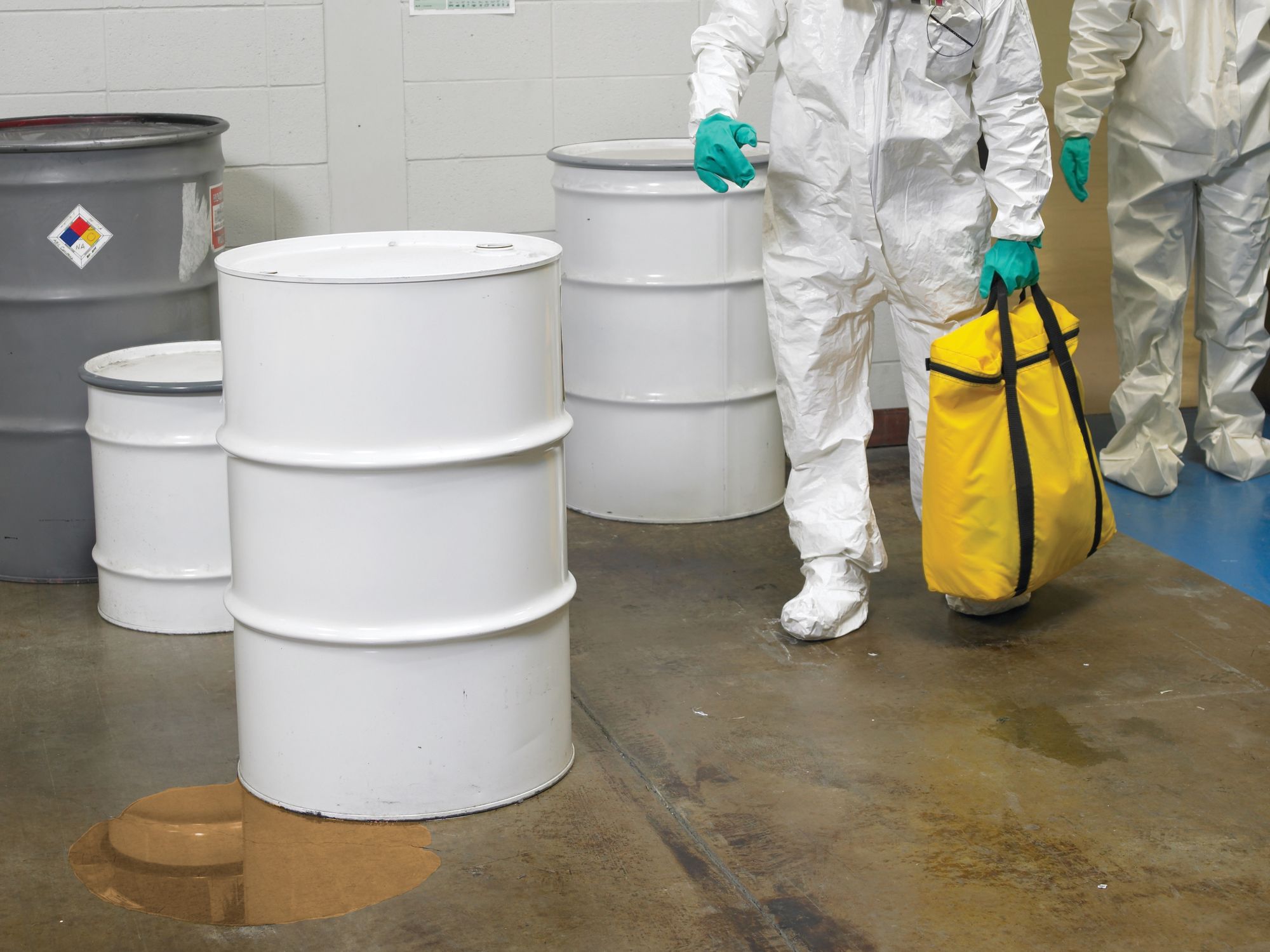Spill response

- It’s important for facilities to take proper steps to prepare for, prevent, and quickly respond to spills.
Spills come in many different sizes and in various states of emergency. A small leak from a barrel holding used oil in an enclosed loading bay, complete with secondary containment, is much less urgent than a large oil spill from a tanker truck on a bridge over a protected waterway.
While every precaution must be taken to prevent spills of hazardous substances, spills can and do happen. It’s important to be ready to respond appropriately to spills to minimize the impacts to workers, the community, and the environment.
Spills can be triggered by:
- Equipment malfunctions
- Leaking containers
- Container punctures
- Transport incidents
- Transfer line failures
- Overfilling
- Pipeline breaks
- Dike ruptures or failures
- Fires or explosions
- Floods
- Earthquakes
- Hurricanes, tornadoes, or other natural disasters
Large spills can result in losses to life, property, the environment, and more. How much those losses amount to all depends on the types of substances involved, the location of the spill, and the quantity of the substances spilled, along with the actions taken to mitigate it. In a nutshell, spills can:
- Temporarily or permanently halt operations;
- Result in a response from employees or outside responders;
- Endanger workers, responders, and public health and safety personnel, leading to injuries, illnesses, and death;
- Impact drinking water sources or other natural resources;
- Lead to hefty government fines;
- Raise insurance premiums; and/or
- Erode public confidence and negatively impact company public image.
With so much at stake, it’s important for facilities to take proper steps to prepare for, prevent, and quickly respond to spills.
